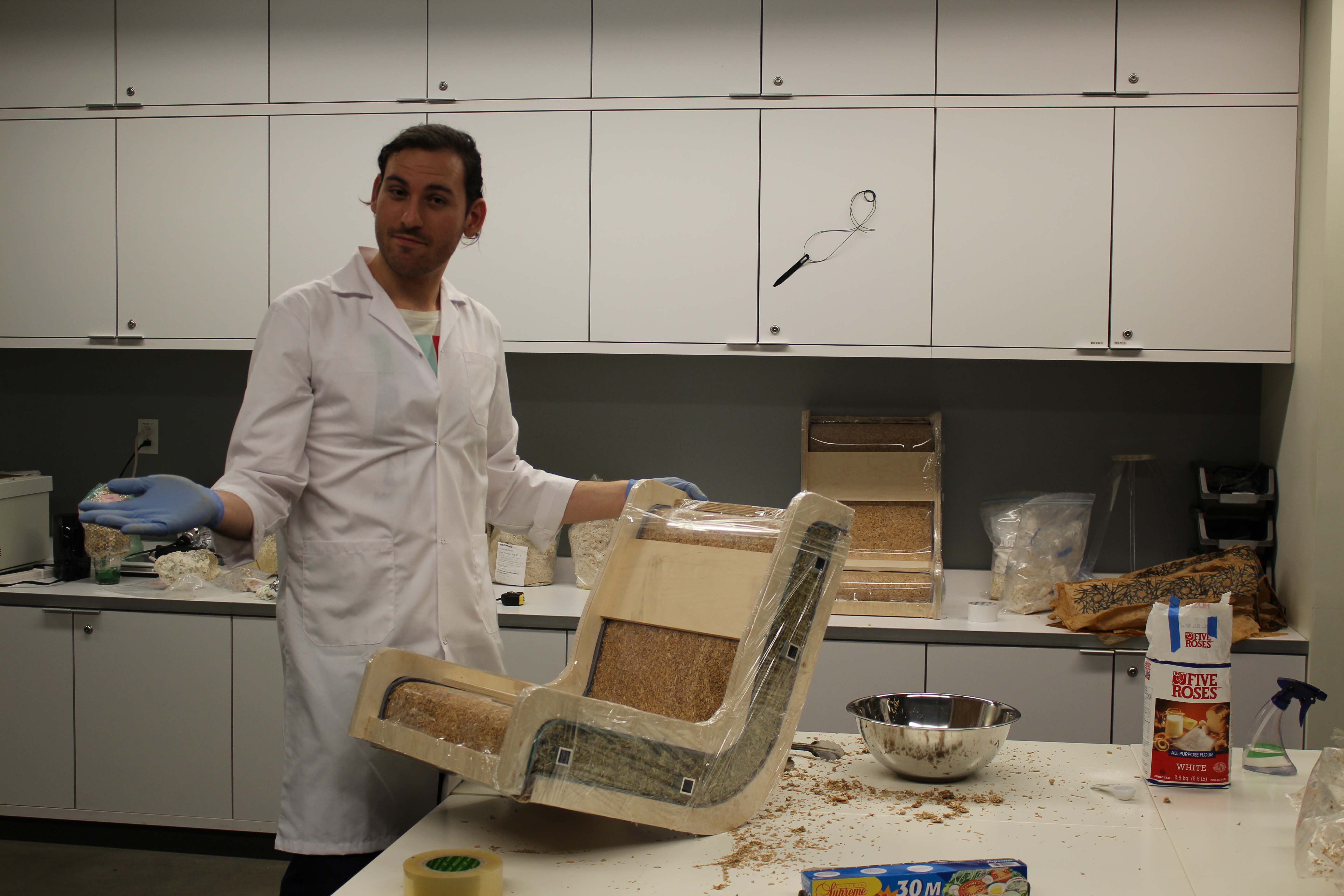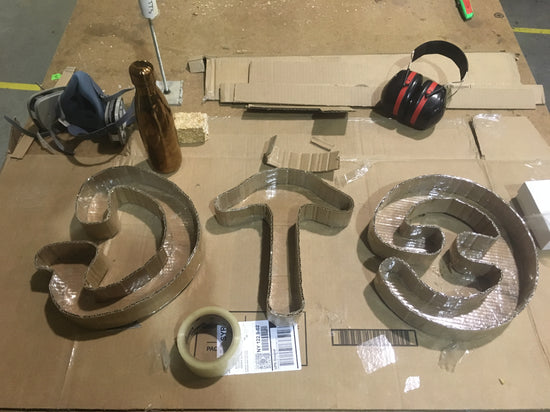Q : What kind of art do you create?
A: My work is related to my master degree in Design (Concordia University, Montréal, QC). It transposes the use of mycelium in the field of public transport design. The idea is to investigate the potential uses and benefits of the mycelium as a sustainable alternative to petrol-based products (plastics). During the past year, I've been growing several seats, wall and ceiling panels for a full scale mock up of a metro train. I also conducted a workshop at school where students had the chance to grow their own lamp using only bubble wrap and glass bottles to make a mold.
Q: How did you start working with mycelium?
A: It started about a year and a half ago. I wanted to inject something exciting in my research and I knew Concordia was the kind of place that would allow me to experiment with materials and biology. I knew about project using bio-inspired approaches or trying to synthesize organic materials (like fake leather). I talked to my research supervisor, and he suggested mycelium. At that time I've had heard about mycelium packaging and naturally (or naively) I thought: “if it can be used to replace plastic in packaging, I guess it can be used to replace plastic in a train”.
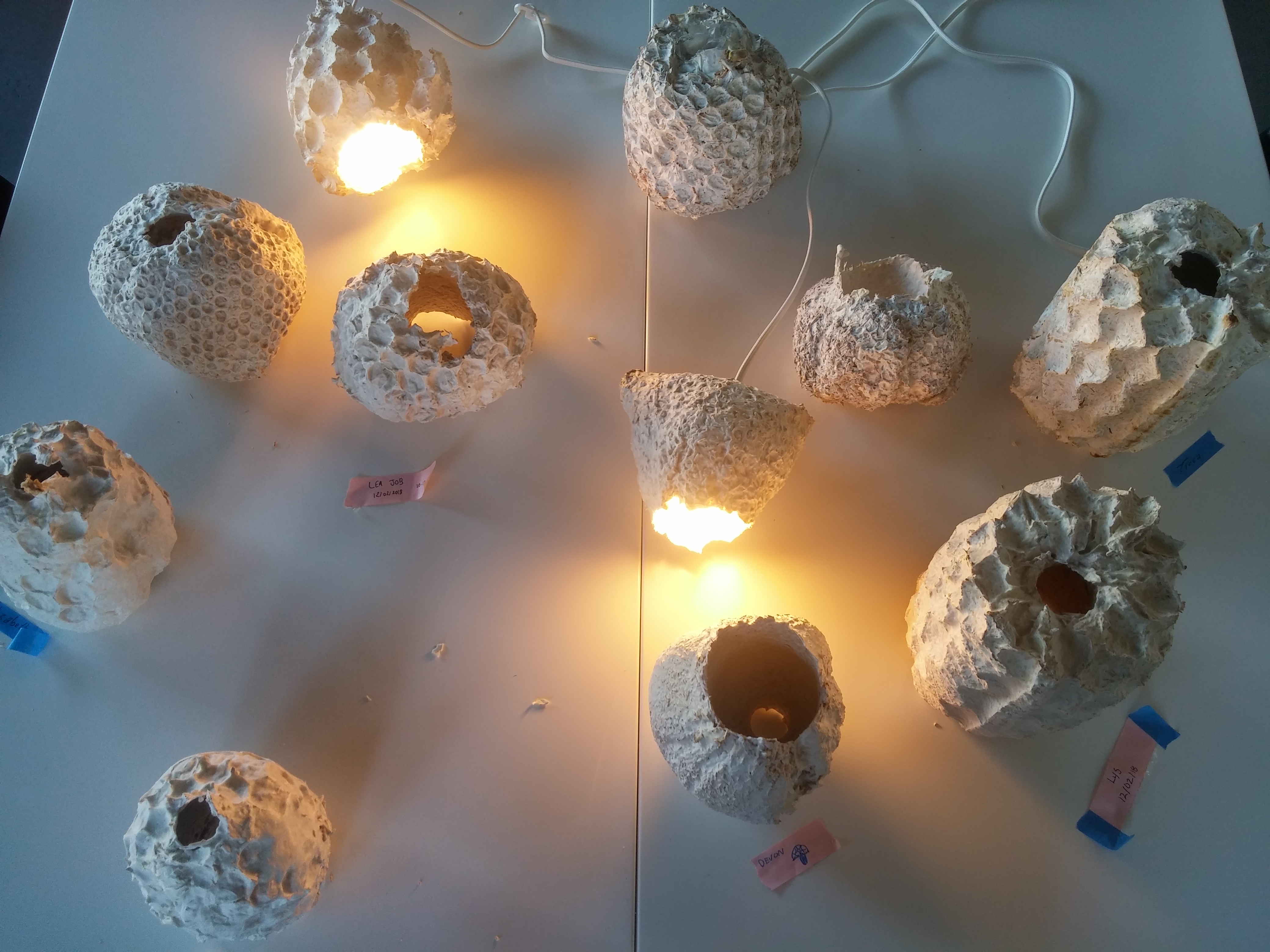
Q: What do you like about working with mycelium?
A: It is very easy and fun to use! The principle is very simple but it enables a lot of creativity and experiments. Once you get confident with the material, you quickly start to try new things and techniques to shape it. I also love the texture, the smell and the way it perfectly duplicates details or imperfections from the casting molds.
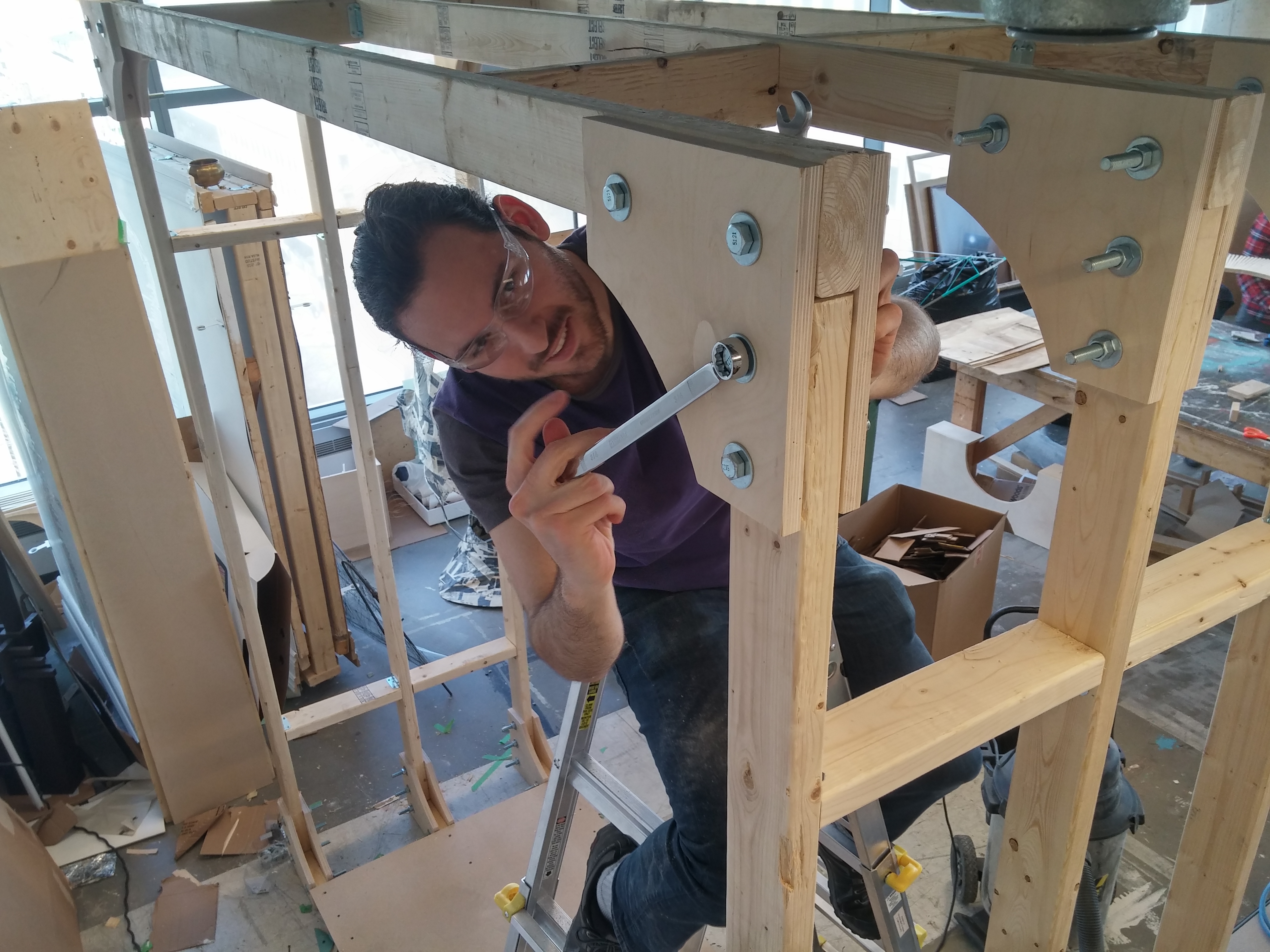

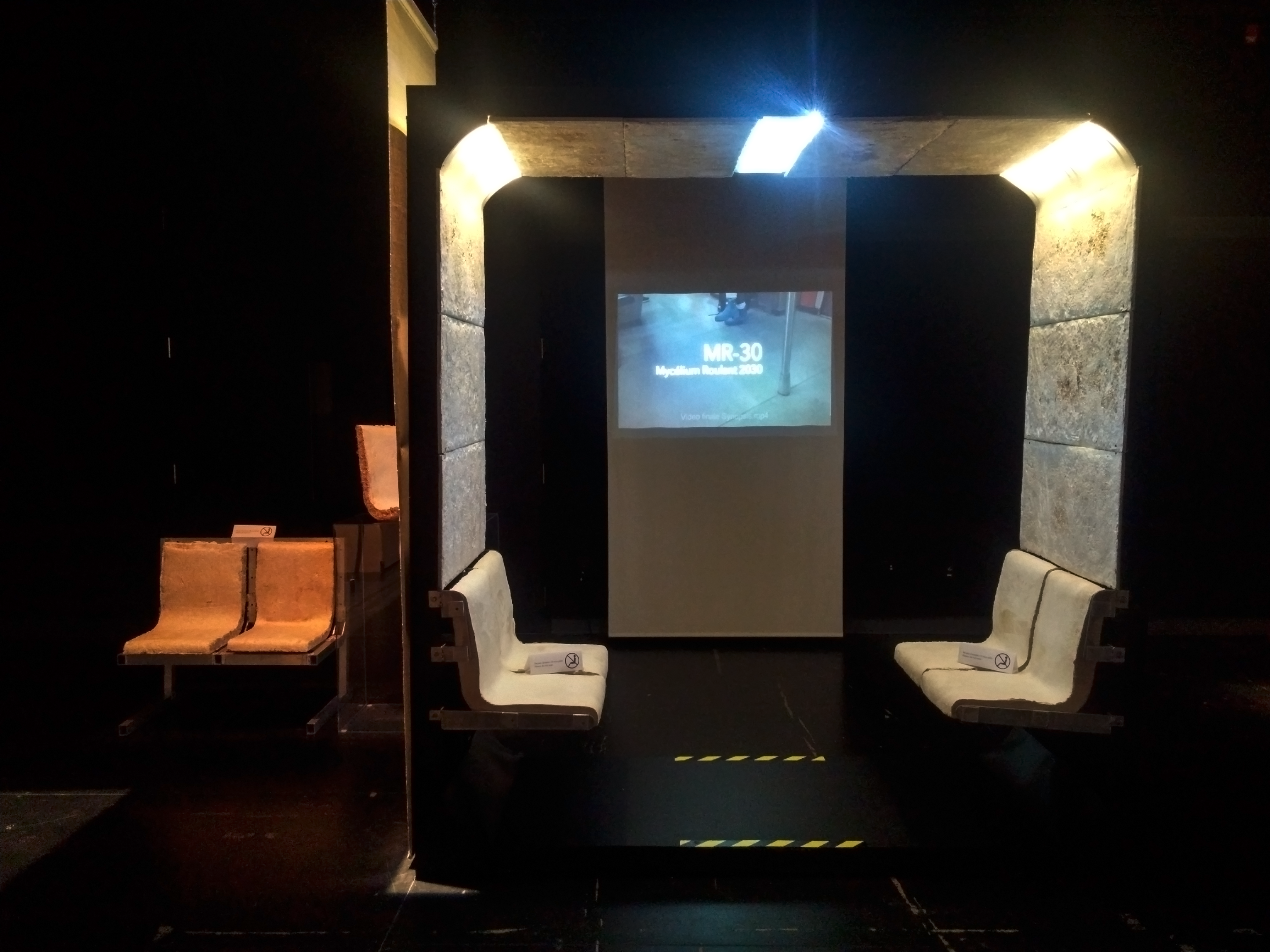
Q: What is your goal as an artist?
A: As an artist, I'd love to keep having fun and experimenting with mycelium and other biomaterials. I want to explore through different scales of project: transport, architecture, fashion and object design.
As a designer, I hope to be able to promote and establish the field of biofabrication in Montreal. I think it has the potential to have a strong impact on people's mind and their sensitivity to environmental issues while addressing these issues. Biofabrication and biomimicry are the demonstration that sustainable solutions can be both efficient, inspiring and beautiful at the same time.



